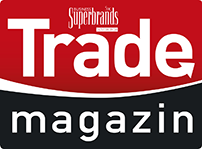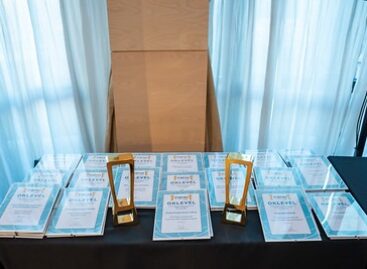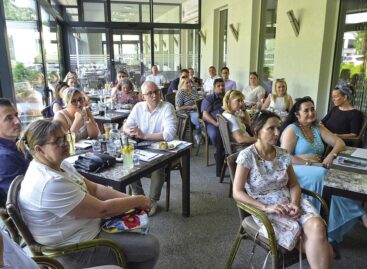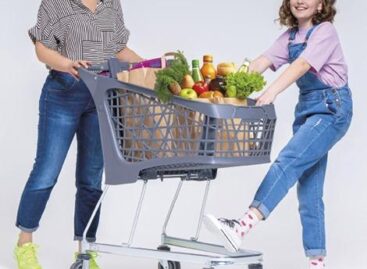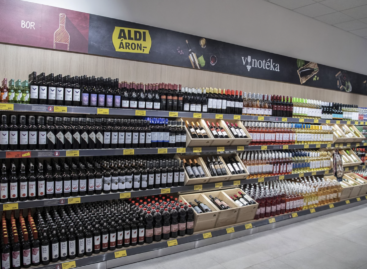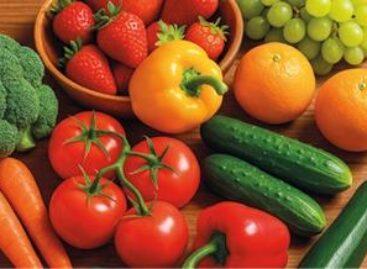Half full is the glass of the past 15 months
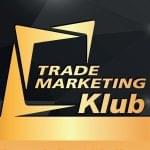 One of the most popular online events of the Trade Marketing Klub, the “First-hand from market researchers” meeting, was held on Thursday, April 3rd this year from 3 pm. In addition to a comprehensive presentation of the consumer market by leading market researchers, participants also heard about data-driven promotions.
One of the most popular online events of the Trade Marketing Klub, the “First-hand from market researchers” meeting, was held on Thursday, April 3rd this year from 3 pm. In addition to a comprehensive presentation of the consumer market by leading market researchers, participants also heard about data-driven promotions.
Nearly 150 people registered for TMK’s traditional spring online event, where 3 market research companies – Yougov, NIQ, RetailZoom – presented the characteristics of 2024 and gave an outlook on the FMCG trends expected for 2025. The event’s professional sponsor, PromoLab, provided insight into the secrets of effective promotions based on analysis.
In the virtual space, the gathering was welcomed by the founders of the Trade Marketing Klub, Ágnes Csiby, Ildikó Kátai Havasiné and Zsuzsanna Hermann, who also moderated the afternoon as the hostess of the event.
Promo picking

József Scheiling, Yougov’s business development manager, presented the main characteristics of the purchases of 4 million Hungarian households based on a representative sample of 4,000 households continuously surveyed in the Shopper 365⁰ research. The speaker touched on economic characteristics, inflation and food price developments in the light of European and regional figures. He analyzed customer behavior and presented the development of coping strategies. Although their role is decreasing, customers have also cut back on indulgences.
In addition to price, quality and promotions also play a significant role in product selection. Among the channels, discount and drugstore chains and e-commerce have grown the most in popularity. A third of shopping baskets are daily purchases, a third are small accumulations made several times a week, and the “promo picking in several stores” shopping behavior is becoming increasingly strong.
Efficiency and excitement

Jácint Goneth, business development manager at PromoLab – the event’s professional sponsor – presented the advantages of the automated and scalable system of the digital ecosystem. He emphasized that compared to individual, brand or retail promotions, building a regular customer database maximizes the effectiveness of campaigns. In this case, regular customers and impulse buyers can be easily activated and notified of the launch of the campaign, which is why the return rate is high.
Based on real-time reports and analyses, consumer profiles, brand and cross-consumption-based statistics are created.
In general, it can be said that by activating rural cities, involving the 25-55 age group, providing frequent chances of winning, and with a cash or digital voucher grand prize, up to 3-5 times the efficiency can be achieved from the same budget. PromoLab’s new system combines the efficiency of loyalty programs with the excitement of sweepstakes.
Where is FMCG going next?

Krisztina Holczinger-Zay, NIQ’s customer relations director, presented moderate expectations for economic growth in light of real wage changes and the slowing rate of price increases.
She highlighted the categories showing volume growth. In food, dairy products, frozen goods and snacks, and in chemical products, face, body, hand and foot, mouth, hair care and household cleaning products grew the most.
Rising food prices continue to lead the list of consumer concerns. Consumers are looking for cheaper products, categories and stores, switching down, abandoning items and paying attention to the one-time shopping amount. Most of them go to supermarkets, but Hungarian customers spend the most in discount stores.
The popularity of private labels is unbroken, but their growth rate is decreasing. At the same time, the growth rate of the 10 largest brands exceed that of private labels at the end of February 2025, and in most important product groups, manufacturer brands are the engines of growth.
Declining number of stores, increasing performance

Andreas Christou, CEO of Retail Zoom, concluded that domestic chains performed above inflation this year based on product inflation trends.
The concentration of trade continues, with more than 2,000, mainly independent, stores closing in our country. The traditional channel is appealing to new customer segments, introducing new categories and strengthening its own brand. The role of promotions is also increasing in this channel.
Home cooking has decreased in the past year and convenience and impulse buying are continuously increasing, as is well exemplified by the above-average growth of the ready-to-eat, frozen food and confectionery categories.
The gap between Budapest and the countryside is widening in terms of disposable income, with the latter’s average basket only half that of the capital.
The questions addressed to the speakers concerned the background of price increases, the importance of seasons, the role of Hungarian products, the perception of healthy and natural foods, the impact of ERP and the details of growth opportunities in 2025.
An article on the presentations will be published in detail in issue 6-7 of Trade magazin.
Related news
Records and innovations
🎧 Hallgasd a cikket: Lejátszás Szünet Folytatás Leállítás Nyelv: Auto…
Read more >A net, not a network: the art of networking
🎧 Hallgasd a cikket: Lejátszás Szünet Folytatás Leállítás Nyelv: Auto…
Read more >YouGov Shopper: market research on new grounds
🎧 Hallgasd a cikket: Lejátszás Szünet Folytatás Leállítás Nyelv: Auto…
Read more >Related news
Bread and wine for 399 forints, mulled wine for 450 forints: ALDI opens its own downtown Christmas market
🎧 Hallgasd a cikket: Lejátszás Szünet Folytatás Leállítás Nyelv: Auto…
Read more >New results of the winter seasonal food chain inspection have arrived
🎧 Hallgasd a cikket: Lejátszás Szünet Folytatás Leállítás Nyelv: Auto…
Read more >The fruit and vegetable sector needs improvement
🎧 Hallgasd a cikket: Lejátszás Szünet Folytatás Leállítás Nyelv: Auto…
Read more >